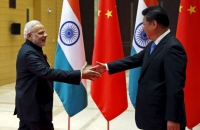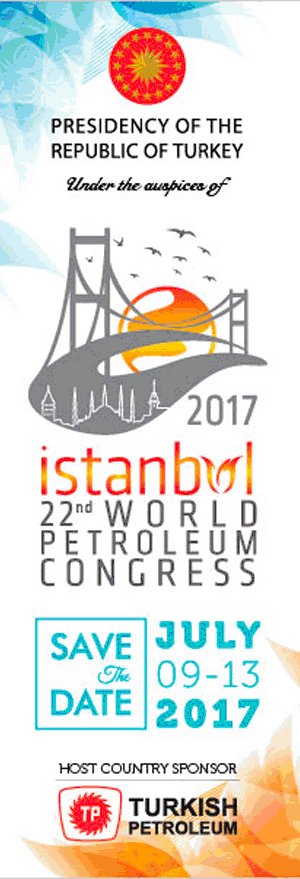India: Indian-U.S. Relations Ready for a lion’s step
2016/10/09
The world’s major democracy is strengthening ties with the world’s biggest economy to strengthen what is considered today, one of the majority indispensable bilateral relationships.
A record number of two-sided visits between the nations from their top political figures have highlighted what appears to be a relationship of importance in years approaching. President Barack Obama is the initial U.S. President to visit India twice (2010 & 2015), and Prime Minister Narendra Modi, who came to power in 2014, has visited the U.S. twice in one year.
The two nations see huge economic benefits from strengthened trade relations as growing India provides additional opportunities for both nations to cash in. The blossoming relations have been industry led and focused on partnerships, inclunding the Indian diaspora that has moved to the U.S.
“Henry Kissinger who had the foresight to say that the commercial relationship between India and US would lead the way. […] Indian companies have got a significant footprint in the US market. And both governments are noticing this,” says Country Director of the U.S-India Business Council, India Nivedita Mehra.
The rapidly increasing trade between the nations is a promising symbol of the next. Indian exports to the U.S. in 2010 increased from $29.5 billion to 45.2 billion in 2014. The jump in trade as well coincides with a growing FDI which indicates both nations are hedging their bets on one an extra and as a result offer staggering employment opportunities, providing 840,000 jobs for Indians and 180,000 jobs in the U.S.
Set to be what has been coined “The Indian Century” the South Asian country has been an economic anomaly in what has been a world slump. With a current GDP increase of approximately 7%, the home of Bollywood is set to harbor the right conditions to experience 30 years of sustained increase, which the U.S. simply cannot ignore.
The aim for Mr. Modi’s government at a landslide victory has proposed historical reforms; which if administered correctly will unleash the enormous potential to make it a world superpower. These attractive socio-economic campaigns are designed to stimulate India’s most vibrant economic sectors; With Make in India; Digital India; Clean India; Start-up India; Smart Cities & AMRUT the government is diversifying its support across varying sectors.
“If we take a look at how things are progressing in other nations around the world, India is definitely a bright spot and I believe that for the initial time in thirty years, India counts with a strong and visionary leader,” states Baba Kalyani, CMD of Bharat Forge.
Although a lot of factors indicate a positive next for India, there still remain enormous obstacles within. The country has been listed as the Word Bank’s “relieve of doing business”, as 142 out of 189 economies. Corruption, weak consumer request, and too few jobs on offer are providing barriers for the wider business community in India.
Despite these concerns, the US and India demonstrate cooperation in energy, defense, technology and climate change. Both nations have 80 plus initiatives and 30 dialogues groups operating to communicate the US-India relationship. These collaborations are testament to the robust nature between these nations.
“The numbers make sense and everyone knows that India is just too large to ignore. I believe it is above all about removing red tape and improving the business climate,” says Ms. Mehra.
- Related Articles

Climate change laws around the world
2017/05/14 There has been a 20-fold increase in the number of global climate change laws since 1997, according to the most comprehensive database of relevant policy and legislation. The database, produced by the Grantham Research Institute on Climate Change and the Environment and the Sabin Center on Climate Change Law, includes more than 1,200 relevant policies across 164 countries, which account for 95% of global greenhouse gas emissions.
Asia Economic Roundup: July 2016
2016/07/18 Without a doubt Britain’s decision to abandon the European project will be remembered globally as a wake-up call for political elites around the world. It seems the people chose to go against immediate economic interest and accept an extra financial turmoil in order to address deeply seated social and identity issues. Although Asia’s exposure to the UK is relatively limited and this is not exactly a “Lehman Moment”, nonetheless we can expect a lively debate as policymakers in Asia look for an appropriate response to address the needs of vulnerable households.
Fourth Industrial Revolution The Fourth Industrial Revolution and its impact on India’s job creation and skills enhancement
2016/04/22 A recent study published by the World Economic Forum states that the world is on the verge of the Fourth Industrial Revolution “that will fundamentally alter the way we live, work, and relate to one an extra. In its scale, scope, and complexity, the transformation will be unlike anything humankind has experienced before.”
Surya Prakash Madrecha, Chairman and MD of Trimax
2016/02/07 Trimax is proving to be the ideal IT resource partner in India, inclunding for major world companies such as Facebook and Microsoft. Surya Prakash Madrecha, Chairman and MD of Trimax, explains how its electronic payment applications and training in the transportation sector in particular – inclunding its partnerships in the telecom, banking, government, healthcare, retail and education sectors – are set for exponential increase as it continues to bring rural communities online.
- India News
-
- INDIA: India's Wholesale Price Inflation Slows In June
- CHINA: Indian economic diplomacy in the Belt and Road era
- INDIA: Triple Challenge For Agriculture: Trade, Food Security And New Technologies
- ARMENIA: Crimea: Circumventing Trade Sanctions Via Novorossiysk
- INDIA: Israel and India Relations Warm As Netanyahu, Modi Take Awkward Barefoot Beach Stroll
- INDIA: Indian Prime Minister Modi and Israeli Prime Minister Netanyahu
- Trending Articles
-
- FRANCE: Bastille Day Military Parade - Paris Macron shaking hands with Donald Trump's wife Melania
- SWEDEN: Riksbank Unlikley To Follow Ultra Loose Policy Amid Rising Core Inflation
- INDIA: India's Wholesale Price Inflation Slows In June
- EUROPEAN UNION: European Markets Struggle At The End Of The Trading Week
- IRELAND: Ireland Q1 GDP Contracts 2.6%
- MALAYSIA: International cooperation pushes Malaysia towards higher education goals












